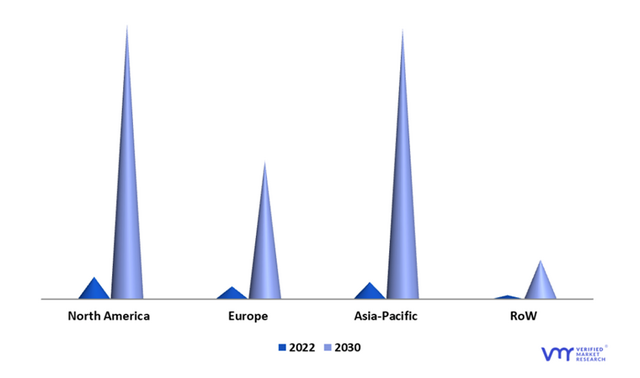Boyden Report Series
Decoding Tech Trends and Leadership in the Digital Age
Technology Report 2024: Analyzing markets, studies, and trends reshaping business with expert insights from Boyden's Global Technology Practice Members
Exploring AI's Impact

Generative AI’s Ubiquitous Adoption and Integration into SaaS Offering
"Generative AI is revolutionizing the SaaS sector by making applications more efficient, innovative, and personalized. This integration is transforming SaaS from a supplementary tool to a mission-critical asset, enabling advanced analytics and predictive modelling. The rapid adoption of AI underscores the need for skilled talent to fully leverage its potential, marking an exhilarating era for the industry. As AI continues to evolve, it will redefine business operations and customer experiences, driving unprecedented growth and transformation."
John McCrea
Managing Partner, United States
Global Sector Leader, AI, Cloud & Software
- Organisations continue to operate amidst change and disruption. Whether characterised as innovation, transformation, or reinvention, AI is increasingly seen as the catalyst for change, because no other technology has the potential to materially impact every aspect of an organisation, from driving efficiency, productivity and innovation to product development, marketing & sales. AI’s capacity to drive reinvention is therefore driving its ubiquitous adoption.
- Accenture’s Pulse of Change Index finds the rate of change affecting businesses has risen steadily since 2019, amounting to 183% over the last four years. Disruption is up 33% year-on-year. In response, 83% of organisations have accelerated their digital/AI transformation.
- Tech experts are in the hot seat. IBM research finds that within large organisations, 42% of IT professionals have actively deployed AI while another 40% are actively exploring it.
- AI is fast becoming embedded in cloud-based applications, such as chatbots, IoT, AI as a service, predictive analysis, process improvement and more. This is making AI’s adoption easier, faster and a fraction of the cost of legacy applications. The result is a refreshed and enhanced value proposition for legacy SaaS offerings.
- Embedding AI and machine learning (ML) in SaaS applications enables a plethora of new functionality including advanced analytics, predictive modelling, and data-driven insights, which in turn saves time and human effort, while doing so in a consistent and predictive manner.
- For insight-driven and predictive data-driven organizations needing vast amounts of data, GenAI's ability to generate synthetic, compliant data is game-changing, especially in highly regulated sectors like retail, robotics, and healthcare.
- AI enhances the user experience by processing vast amounts of customer data to make personalized recommendations. Within SaaS products, AI and ML algorithms streamline processes and transform business operations.
- AI and ML’s growing prominence has therefore elevated SaaS applications from part of a toolkit to mission-critical applications enabling a new level of operational excellence in the digital era, driving innovation, efficiency, and ROI.
- Gartner reports that “AI will be embedded in more than 75% of all new software applications by 2025. This widespread adoption of AI will revolutionise the way SaaS solutions interact with users, optimise operations, and deliver value to businesses. By 2028, enterprises will enhance productivity by replacing 60% of SaaS workplace applications that lack GenAI-driven capabilities with those that do”.
- AI- and ML-powered SaaS applications have real-world uses in customer service, financial analysis, e-commerce personalization, healthcare, HR, supply chain optimization, energy management, and legal document analysis. Future applications include hyper-personalization (IBM Watson Assistant), cognitive automation (Microsoft Power Automate), and predictive maintenance (Uptake).

Global AI SaaS Market by Geography (USD Billion)
- The AI SaaS market is therefore forecast to reach over US$1.5 trillion by 2030 and was valued at nearly US$74 billion in 2020; this would register a CAGR of 38% from 2022 to 2030.
- In 2021, North America led the global AI SaaS market with a 40%, valued at US$37 billion, and is projected to grow at a CAGR of 37% from 2022 to 2030. Asia Pacific was the second-largest market, valued at US$28 billion (2021), with a projected CAGR of 41% to 2030.
- The far-reaching opportunities presented by the integration of AI and ML into SaaS is driving a huge demand for talent, from AI architects, developers, and project managers to CIO/CTO/CISO executives who understand AI and how to implement it. Hiring at all levels is increasingly focused on skills rather than experience, broadening the talent pool beyond executives with established track records. Organisations require deep expertise in identifying the right people in today’s digital landscape – expertise honed by constant interaction with those shaping tomorrow’s world.
- Read more on the topic:
Accenture: Reinvention in the Age of Generative AI
Capgemini: Transforming the Data Terrain Through Generative AI and Synthetic Data
Nexthink: Gartner Predicts 2024 AI’s Impact on the Employee Experience
IBM: Global AI Adoption Index
EY: Businesses Favour Gradual Adoption of GenAI
Verified Market Research: AI SaaS Market Size and Forecast
IEEE Computer Society: AI and Machine Learning Integration in SaaS Applications

AI’s Disruption of the Semi-Conductor Market
“Media reports fail to recognise what we see on the ground, which is the semiconductor industry ushering in a new era of global talent mobility, and global talent tracking. There are a huge number of engineers from East and Southeast Asia working in fabs in the US, Europe and even Japan. Regions across the world are competing for talent in the race to mass manufacture semiconductors. Asia is not only a powerhouse for semiconductors, but the biggest source of talent worldwide. Nvidia CEO Jensen Huang is revolutionising tech culture, disrupting hierarchies, need-to-know and strategic planning. This industry has a lot to teach the world.”
Riemer Ike Fokkema
Partner, Netherlands
- According to Silicon Semiconductor, the global semiconductor industry will be worth US$616.5 billion in 2024, up from US$528.8 billion in 2023, driven by over 16% growth from product innovation, increasing semiconductor demand, next-gen computing, HPC applications, and the rise of semiconductors in vehicles and automotive electrification.
- Key developments include:
- GenAI and LLMs: Increasing demand for high-performance GPUs in data centres and HPC environments.
- Product Innovation: 2024 sees a resurgence with new chipset designs from Intel, Marvell, and AMD, along with advancements in co-packaged optics (CPO) and next-gen memories like MRAM and PCM.
- These developments are driven by the need for chips, which are designed to handle the huge data flow required to make AI function effectively, and the ability of hardwired chips to process complex AI algorithms at speed.
- With major growth expected across the discreet, sensors, analog, logic, micro and memory segments through 2024, the memory segment is expected to drive a surge in market valuation. AI servers will need 10x the memory capacity of a traditional server, underscoring the need for innovative new chips and processes for mass deployment.
- AI chips are crucial for handling the immense processing power needed for AI workloads. These chips require faster, smaller, and more efficient transistors. Manufacturers' ability to densely pack these transistors in chipsets has significantly lowered barriers to AI adoption.
- The size of transistors or nodes in semiconductors has shrunk from nearly 100 nanometres (nm) in the early 21st Century to 5nm, with plans for production of 2nm semiconductors in 2024. Smaller transistors enable more powerful and efficient chipsets which are fundamental to powering advancements in AI.
-
Despite advances in chip design, current architectures are nearing physical limits, making mass production increasingly difficult and expensive. Manufacturers are focusing on more effective architectures, such as integrating assembly and packaging through hybrid bonding to increase transistor counts and add more functionality.
- Key developments include:
- Advanced Packaging: With TSMC leading limited production and high-volume manufacturing on the horizon, advanced packaging can combine logic chips, CPUs, GPUs, RF, and memory on a single chip for faster operation.
- 3D Packaging: Stacking chips vertically benefits small devices like mobile phones, relying on the latest dielectric developments (insulating film) and etch products (for precise debris removal and edge creation).
- AI itself is redefining semiconductor manufacturing by automating and refining production stages, shifting chip design away from complex and labour-intensive processes to more efficient and intelligent manufacturing processes.
- By using machine learning algorithms to analyse massive data sets, AI optimises chip architecture, speeding up pattern recognition, flaw prediction and layout refinement. Using AI in manufacturing optimisation also pushes design limits.
- AI’s extensive data analysis capabilities enable manufacturers to identify and resolve production inefficiencies, ensuring consistent and reliable production quality. Cost effectiveness is gained through predictive maintenance using real-time data analytics and AI, enhancing productivity, and reducing downtime.
- With chips poised to drive the next era of growth, McKinsey projects nearly US$1 trillion in factory investments from 2023 to 2030. However, there's a significant talent shortfall. A lack of STEM graduates, an aging workforce, and low industry appeal threaten to delay new projects and negatively impact the semiconductor value chain.
- The semiconductor industry must align people strategies with business strategies to navigate massive shifts in the global talent pool, such as the migration of highly educated Asians to the US and Europe. This requires HR systems to evolve from local to global reward structures. Key priorities areas include:
- Talent Pool Proximity: Locate new fabs near talent pools or create ecosystems that attract talent.
- Global Talent Mobility: Enhance compensation structures and company culture to support the mobility of highly educated workers.
- Skills Shift: Adapt to the increasing need for professionals with expertise in applications and new materials.
- Attraction and Retention: Strengthen employer branding to address retirement and attrition issues, particularly in the US and Europe.
- Career Development: Address attrition through career development, advancement, and workplace flexibility by expanding career options in management, technical, and non-technical roles, developing future leaders, and optimizing team structures to reduce bureaucracy and improving decision-making processes.
- Diverse Talent Pools: Tap into overlooked talent pools, such as women and neurodiverse individuals. Women only represent 17% of tech roles in the semiconductor industry. Flexible work options can help in talent attraction.
- Read more on the topic:
Silicon Semiconductor: Value of the Global Semiconductor Industry
LinkedIn: The AI Revolution in the Semiconductor Industry
Tech Target: A Primer on AI Chip Design
Lam Research: Advanced Packaging Furthers 3D Semi Structures and Extends Moore’s Law
Goldman Sachs: Artificial Intelligence: An Unprecedented Disruption / AI’s Impact on Semiconductors and Semi-Cap Equipment
McKinsey: How Semiconductor Companies Can Fill the Expanding Talent Gap

AI Presents Profound and Unresolved Ethical and Intellectual Property Challenges
"With more advanced technologies like quantum computing becoming available soon, AI is expected to develop – literally with the speed of light. It presents itself with challenging ethical issues related to IP, privacy, (fake) news and even warfare. Legal frameworks are patchy, this implies that the boundaries are primarily relying on self and peer regulation with AI driven tools. This may sound daunting, yet is an unavoidable reality to which we all must adapt - sooner rather than later."
Bert Pilon
Global Sector Leader, Semiconductor, Infrastructure & Embedded Hardware
Partner, Netherlands
- AI's ability to create content and inventions autonomously challenges historical norms regarding inventorship, copyright and data privacy. Public and ubiquitous access to GenAI is creating IP concerns in both personal and business use forcing the need to fully understand the gravity of the risks involved.
-
IP infringement risks mainly stem from training large language models and GenAI tools with publicly available content authored by individuals with intellectual property rights. Traditionally, this would require recognition, sourcing, or payment. This unconventional use and the creation of new content pose risks for both AI providers and users. Additionally, it's unclear whether GenAI output can be protected by copyright and patent rights when it originates from content owned by others.
- When Google scraped text from books to create its search engine, it defended itself against a lawsuit through 'transformative use,' using copyrighted material in an unintended manner. However, this precedent is unlikely to protect those using AI to enhance or improve existing products or services.
- In order to maximise ROI from the use of GenAI, companies need to address (i) visibility and (ii) disclosure. And the stakes are higher when organisations use GenAI to create products or service from which they may profit.
- Policy makers and judicial bodies are struggling to catch up with the ethical and legal implications of AI in a vacuum of international collaboration.
-
- The U.S. lacks a comprehensive AI regulatory framework;
- The U.K. has adopted a cross-sector and outcome-based framework for regulating AI, not yet codified into law;
- The European Parliament has adopted the AI Act, the first ever comprehensive legal framework on AI worldwide, designed to ensure that AI systems respect fundamental rights, safety and ethical principles in Europe and beyond;
- The Asean AI Guide is a practical guide for organisations designing, developing, and deploying traditional AI technologies in commercial applications.
- While legal frameworks and enforcement are patchy, organisations still need to address their IP risk and consumers are keen to ensure authenticity. Ironically, it is technology that can provide solutions to both.
-
- Nutanix, a next-gen, enterprise platform company quoted on the Nasdaq, explains that blockchain technology provides a transparent record of data provenance to address the inclusion of copyrighted material in AI training datasets, and forms the basis of several currently available solutions.
-
Media organisations and renowned artists are protecting their IP by pairing blockchain with Numbers protocol, which registers the content on a generative AI blockchain, creating a permanent record, which documents the creation process as well as ownership.
-
- Adobe Content Authenticity Initiative (CAI) uses cryptographic methods to store data in files or in the cloud, from within which users can view the provenance for a piece of content. In using blockchain technology, CAI provides a tamper-proof ledger that shows the whole history of the content, including how it was created, and any edits made.
-
- Zero Trust technology, a strategic approach to cybersecurity, provides another option for securely creating and gaining visibility into GenAI. It eliminates implicit trust and validates every stage of a digital interaction. Content delivery network providers offer a suite of zero-trust security to enable enterprises to use the latest AI tools without putting IP and customer data at risk.
- Gartner predicts that by 2025, 60% of companies will use Zero Trust solutions instead of virtual private networks, to fortify defences against sophisticated cyber threats.
- A zero-risk approach involves using only company-owned data for GenAI creation. For example, GenAI platform Writer creates written content based exclusively on validated and vetted internal data. Organisations can access a GenAI tool customised for them around tone, brand guidelines, communications style and so on. Employees can access it via the Internet, inside a Word document or while using interface design tool Figma.
- What about withholding data from GenAI tools? That’s possible too. For instance, Glaze helps artists protect original content from AI training. A similar business tool is anticipated.
- Deep fakes, however, are more problematic. According to Lexis Nexis and law firm Farrer & Co, deep fakes use machine learning and AI to create realistic but fake content, posing significant challenges. Tools like Google DeepMind's watermarking detect deep fakes by analyzing facial expressions, blinking patterns, and audio manipulations.
- While such technology exists, no mechanisms compel organizations to use it. As AI evolves, risk management and protection will become essential to avoid extensive forensic investigations and potential entanglements in complex issues.
- Read more on the topic:
Clifford Chance: Key IP Issues for Businesses Arising from AI
The Forecast by Nutanix: Solving Generative AI’s IP Problem
LinkedIn Pulse: The IP Quandary in the Age of GenAI
Deloitte: The UK’s Framework for AI Regulation
European Commission: AI Act Shaping Europe’s Digital Future
Lexology: Asean Issues Guide on AI Governance and Ethics
Numbers: Ensuring Trust and Accountability: The Role of Provenance in GenAI for Content Creation
Gartner: Implementing Zero Trust Security
LexisNexis: Deep Fakes
Expert Insights: The Top 7 Deepfake Detection Solutions




